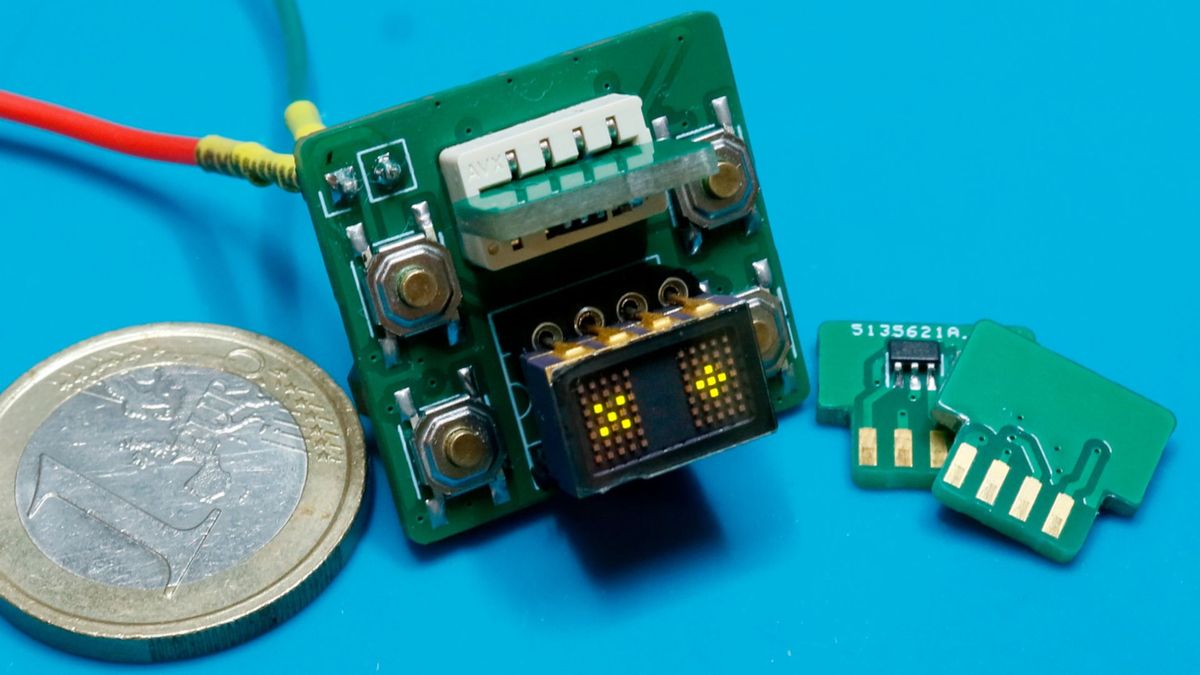You can keep your hulking modern handheld gaming machines. Compact retro systems? Pah! Don’t bother with any of them when you can go seriously old-school and super-small, both at the same time, with the EMES—a games machine that’s barely bigger than your thumb and has cartridges smaller than a fingernail.
As an entry to Hackaday’s Tiny Games competition, if I was on the judging panel then the Epic Minimalist Entertainment System (EMES) would win hands-down. The rules of the competition aren’t remotely strict but the standards of the past winners have been outstanding. So what makes the EMES special, then?
Well, it’s seriously tiny—the whole device isn’t that much bigger than a one Euro coin and it comprises a display, four buttons, a slot for the game ‘cartridges’, and a buzzer. You might think that such a small size makes it virtually unusable but as you can see in the above video, it’s not too hard to play a few rounds of Pong on it.
The killer feature for me, though, is the dot-matrix LED display. It’s a reverse-engineered clone of a 1980s Plessey GPD340, made by the same person who created the EMES. With just two characters, via a twin 5 x 7 monochromatic pixel layout, it’s as basic as they come but it’s a really good fit for the project. That said, the gap between the characters does add an element of surprise to Pong, so it would be neat to see the EMES with a slightly better display.
Reminiscent of the earliest game consoles one could buy, there’s no processor on the board itself. Instead, it’s embedded in the game cartridge…well, plug-in PCB. The dinky board houses an eight-bit ATTiny10 microcontroller, which runs at 8 MHz and boasts just 1 kB of flash memory and 32 bytes of RAM.
You need another system to program the ATTiny10, of course, but that’s no different to any other games console that uses cartridges. With so many features and such a basic microcontroller (it only has four input/output pins), it’s no trivial task getting it all to work.
For example, the buzzer and the display’s brightness control share the same IO pin, but the creator’s solution was to have the output frequency above the buzzer’s audible range for full brightness and then drop the frequency, and display’s duty cycle, to activate the buzzer. The display naturally dims but not enough to be a problem.
I love engineering projects like this and I admire anyone who has the passion, skills, and determination to make something like this happen, even if it’s only for a fun competition. The Epic Minimalist Entertainment System really is something special, though—the build itself is very high quality and as someone who has repeatedly singed his fingers with soldering iron, I’m always astonished by how anyone can make something this small.











